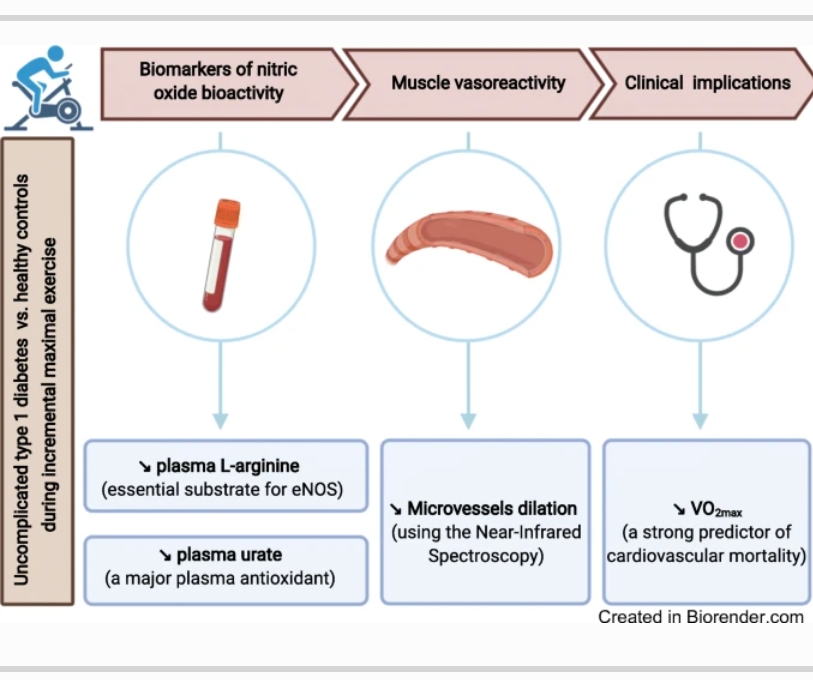Circulating biomarkers of nitric oxide bioactivity and impaired muscle vasoreactivity to exercise in adults with uncomplicated type 1 diabetes
Elodie Lespagnol, Diabetologia volume 64, pages325–338(2021)
Aims/hypothesis
Early compromised endothelial function challenges the ability of individuals with type 1 diabetes to perform normal physical exercise. The exact mechanisms underlying this vascular limitation remain unknown, but may involve either formation or metabolism of nitric oxide (NO), a major vasodilator, whose activity is known to be compromised by oxidative stress.
Methods
Muscle microvascular reactivity (near-infrared spectroscopy) to an incremental exhaustive bout of exercise was assessed in 22 adults with uncomplicated type 1 diabetes (HbA1c 64.5 ± 15.7 mmol/mol; 8.0 ± 1.4%) and in 21 healthy individuals (18–40 years of age). NO-related substrates/metabolites were also measured in the blood along with other vasoactive compounds and oxidative stress markers; measurements were taken at rest, at peak exercise and after 15 min of recovery. Demographic characteristics, body composition, smoking status and diet were comparable in both groups.
Results
Maximal oxygen uptake was impaired in individuals with type 1 diabetes compared with in healthy participants (35.6 ± 7.7 vs 39.6 ± 6.8 ml min−1 kg−1, p < 0.01) despite comparable levels of habitual physical activity (moderate to vigorous physical activity by accelerometery, 234.9 ± 160.0 vs 280.1 ± 114.9 min/week). Compared with non-diabetic participants, individuals with type 1 diabetes also displayed a blunted exercise-induced vasoreactivity (muscle blood volume at peak exercise as reflected by ∆ total haemoglobin, 2.03 ± 5.82 vs 5.33 ± 5.54 μmol/l; interaction ‘exercise’ × ‘group’, p < 0.05); this was accompanied by lower K+ concentration (p < 0.05), reduced plasma L-arginine (p < 0.05)—in particular when HbA1c was high (mean estimation: −4.0, p < 0.05)—and lower plasma urate levels (p < 0.01). Nonetheless, exhaustive exercise did not worsen lipid peroxidation or other oxidative stress biomarkers, and erythrocytic enzymatic antioxidant resources were mobilised to a comparable extent in both groups. Nitrite and total nitrosation products, which are potential alternative NO sources, were similarly unaltered.
Conclusions/interpretation
Participants with uncomplicated type 1 diabetes displayed reduced availability of L-arginine, the essential substrate for enzymatic nitric oxide synthesis, as well as lower levels of the major plasma antioxidant, urate. Lower urate levels may reflect a defect in the activity of xanthine oxidase, an enzyme capable of producing NO from nitrite under hypoxic conditions. Thus, both canonical and non-canonical NO production may be reduced. However, neither of these changes exacerbated exercise-induced oxidative stress.














